Shadow Lake
I had spent the morning hiking uphill through an old pine forest. My route mimed the path of powerful Redearth Creek, a turquoise-colored torrent rushing noisily beside me. Everything was soaked from the rain that had besieged the area for the previous few days. The muddy trail was a testament to that, but so was the lush green moss carpeting the nearby forest floor.
At the end of my 14 km trek — not particularly taxing, even with 440 m of elevation gain — I came to Re14, the Banff National Park backcountry campground that would be my home for the night. Like everything else, the campground was saturated. The area where the park service had set up bear cables was particularly muddy.
Fortunately, there was a small somewhat-dry spot beneath the boughs of three giant lodgepole pines. There I set up my Tarptent-brand, um, tarp tent. Then I ventured out to explore nearby Shadow Lake.
Almost immediately after I left the campground on the trail, I stumbled into Shadow Lake Lodge, a collection of a dozen beautiful log cabins in a clearing in the forest. Glacier-topped Mt. Ball loomed large, dominating the westerly view. The map had indicated the presence of a lodge, but it offered no other details, not even a name.
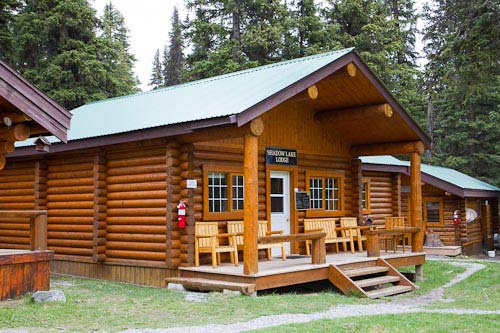
The main building at Shadow Lake Lodge
A couple of day hikers were munching on a snack at one of the lodge’s picnic tables.
“What is this place?” I asked.
“Talk to the girls inside the main building. They’ll tell you all about it,” came the reply.
And so I did. Amy (from Australia) and Yana (from the Czech Republic) explained how the lodge had been in operation since the days of the railroad almost a century earlier. They told me how they had just opened for the season, so there were not yet many guests. They invited me to try the lodge’s afternoon tea service.
Yes, afternoon tea. Despite being in a location that required all guests to make the same hike I had completed that morning, it was not so remote as to be uncivilized. In fact, the lodge provided breakfast, lunch, and a multi-course dinner to the guests staying overnight, in addition to the tea service.
I wasn’t staying at the lodge with its fancy wood walls and roof; I was roughing it, darn it. Thus, afternoon tea cost me $15, but that seemed reasonable for such an extravagance in the backcountry. The spread was impressive: imported cheeses, various cookies, scones, grapes, vegetables, dip, salsa, chips, apple tart, lemonade, and, of course, tea. All of the pastries and cookies were baked on site from scratch, so the building itself smelled great. Okay, maybe the tea service voided my “roughing it” credentials for the day.
The awkward part about the experience was the lack of other people. I was the only customer at the tea. That left me feeling guilty about both not eating much and as well eating as much as I did. I figured I had to try at least one of everything, but that still left enough food for a dozen non-existent people. My inner Minnesotan was tormented. Seemingly sensing the situation, Amy gave me a plastic baggie and told me to take some cookies for later; I happily obliged. The Minnesotan was mollified.
While I was sipping my second cup of tea and munching on my third helping of goodies, a day hiker came by and reported that he heard several whistles while hiking along Shadow Lake, which was located about 1 km from the lodge. He wasn’t certain that it was a human, but he knew that whistles can be distress signals, and he thought it best to inform somebody rather than let it slide. That somebody ended up being Amy.
Here’s the thing about Amy: great person, but not exactly experienced in the backcountry. She had come over from Australia three weeks earlier, seen an ad in the paper in Banff advertising the job at Shadow Lake Lodge, and taken it. Despite the remoteness of the lodge, backcountry experience in the Canadian Rockies was not a prerequisite for the position.
She wisely decided to defer to the park warden on the matter of the whistling.
The lodge didn’t have a normal telephone, but it did have an old autopatch-style radio telephone. Amy tinkered with it for a while, but she was having trouble getting it to dial the park warden’s number. I wasn’t much help beyond offering words of encouragement. The other staff were all away from the cabins on hikes or something, so it was up to Amy to figure it out. She briefly considered using the lodge’s Iridium satellite phone, but the phone reported the account being invalid (huh?). My Globalstar satellite phone would have been another option, but the next satellite pass for its operation was 25 minutes away.
After 15 more minutes of screwing around, Amy finally figured out the correct sequence of DTMF tones and timing to dial the park’s number. She related the account of the whistling to the warden. Much to everybody’s relief, the warden said that it was almost certainly a marmot, not a person.
According to him, marmots make noises that can sound strikingly similar to those produced by artificial human whistles. Amy and I were surprised by that, so we keyed up a Youtube video of a marmot whistling. (Despite a lack of phone service, the lodge had high-speed internet access, most likely via satellite.) Listen for yourself. Imagine hearing just a couple of those bursts, perhaps each for a slightly longer duration; do they not sound at least a bit human?
Later, I went for my own hike along the shore of Shadow Lake. I got drenched by the restarted rain and chilled by the temperature at altitude; snow dotted the ground beside me. I was enjoying view of the stoic turquoise waters and the huge glaciers feeding them when I too heard a whistle in the woods. It was clearly a marmot, but still, the resemblance to a human whistle was enough to make me holler out “Hello! Is anybody there?” The gentle patter of raindrops was the only reply.
I munched down a cookie and hiked back to my tent.
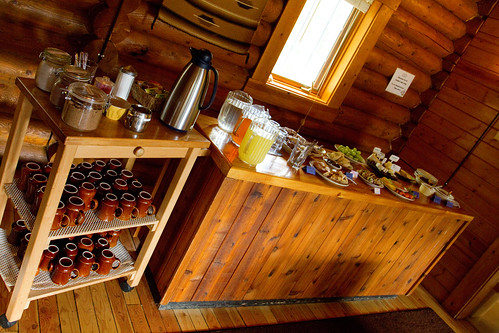
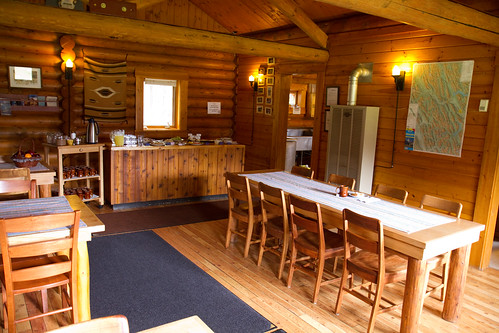
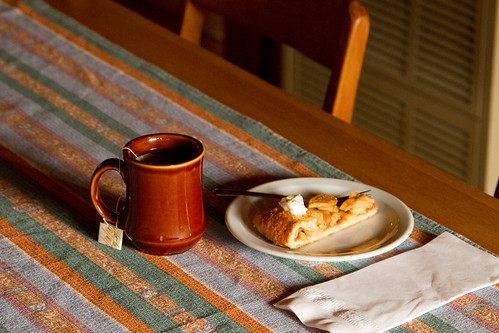
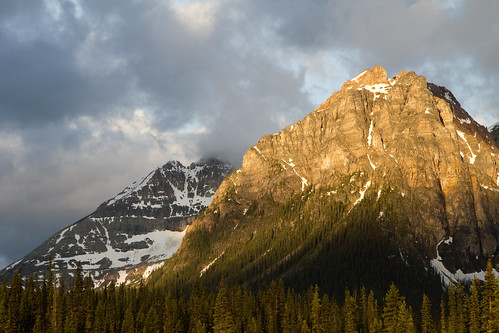
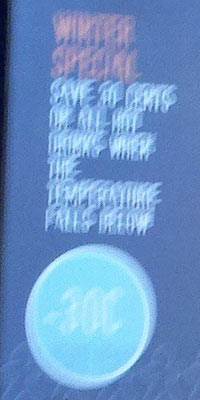
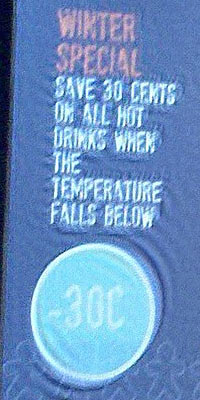
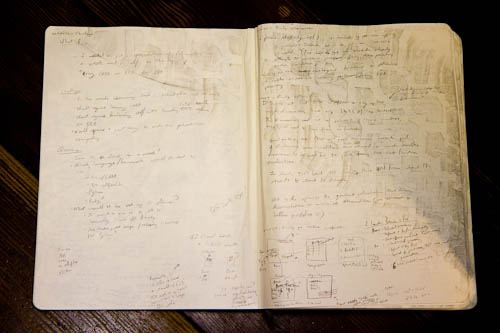
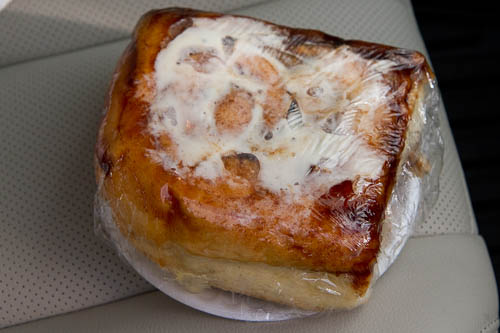
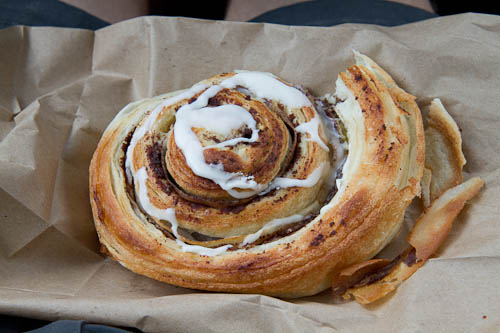


Recent Comments